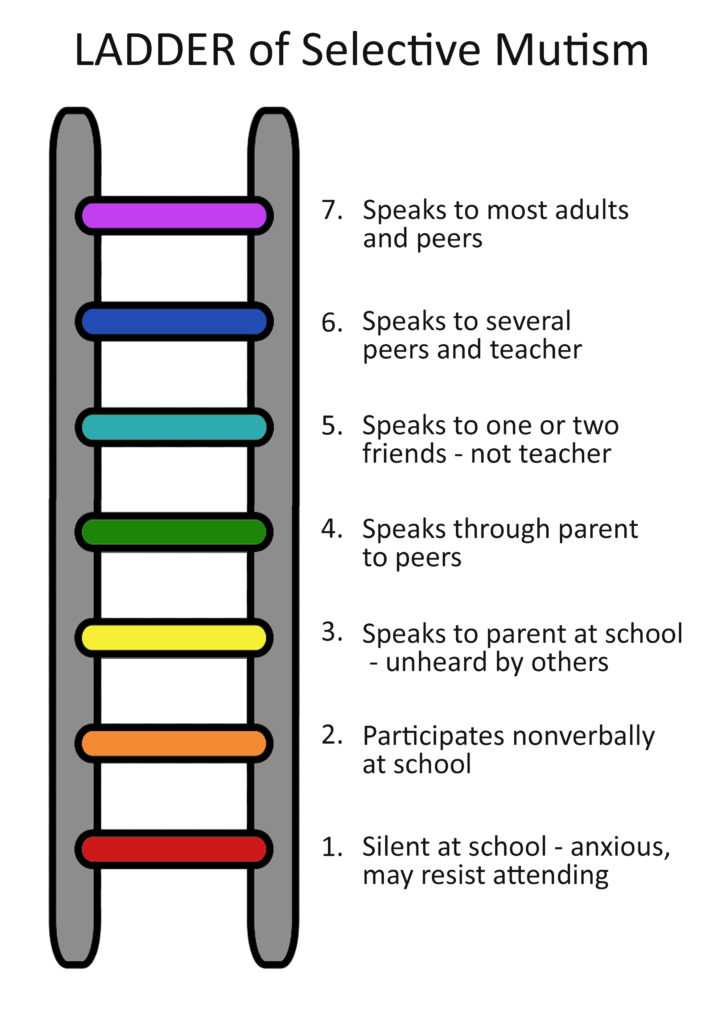The selective mutism ladder gives a general overview of the levels of SM. Determining which level or step on the ladder your child is currently will help in moving forward with treatment.
Whether you’re paying a professional or doing it alone, selective mutism interventions must be consistent and appropriate.
- Consistent: everyone who associates with the SM person should be following the same guidelines.
- Appropriate: the goals shouldn’t be too difficult or too easy to achieve and should be appropriate for their level.

Take a close look at the above image and determine where your child falls on the ladder. If your child is at the bottom rung, silent in all situations such as school, it could be detrimental to set a goal to try to “Speak to your teacher tomorrow,” or “Answer your teacher’s question.” Instead, look at the next rung on the ladder and set a goal appropriate for that level. In the case of the bottom rung level child, an appropriate goal might be, “Try to keep eye contact with your teacher for five seconds when they look in your direction,” or “Try to nod if you know the answer to a question.” Work towards nonverbal participation.
Resist the urge to jump to higher levels too soon. Accomplishing a goal in one day does not mean the child can always do it. Keep enforcing the same or similar goals each day for a few weeks before attempting to move on.
Did you know it takes at least three weeks to learn a new habit and nearly three months to make that habit an automatic reaction? This is the 21/90 rule.
https://www.activeiron.com/blog/the-21-90-rule-make-life-better/
Selective mutism is the underlying reason a person cannot speak when pressured. But the act of not speaking can become a habit, a way of life. And the longer a person follows that way of life, the more difficult it is to break or change. Thus, learning a new way or habit is the key to living free from the grasp of SM.